Filed Under #cooperation
Nov 18, 2025
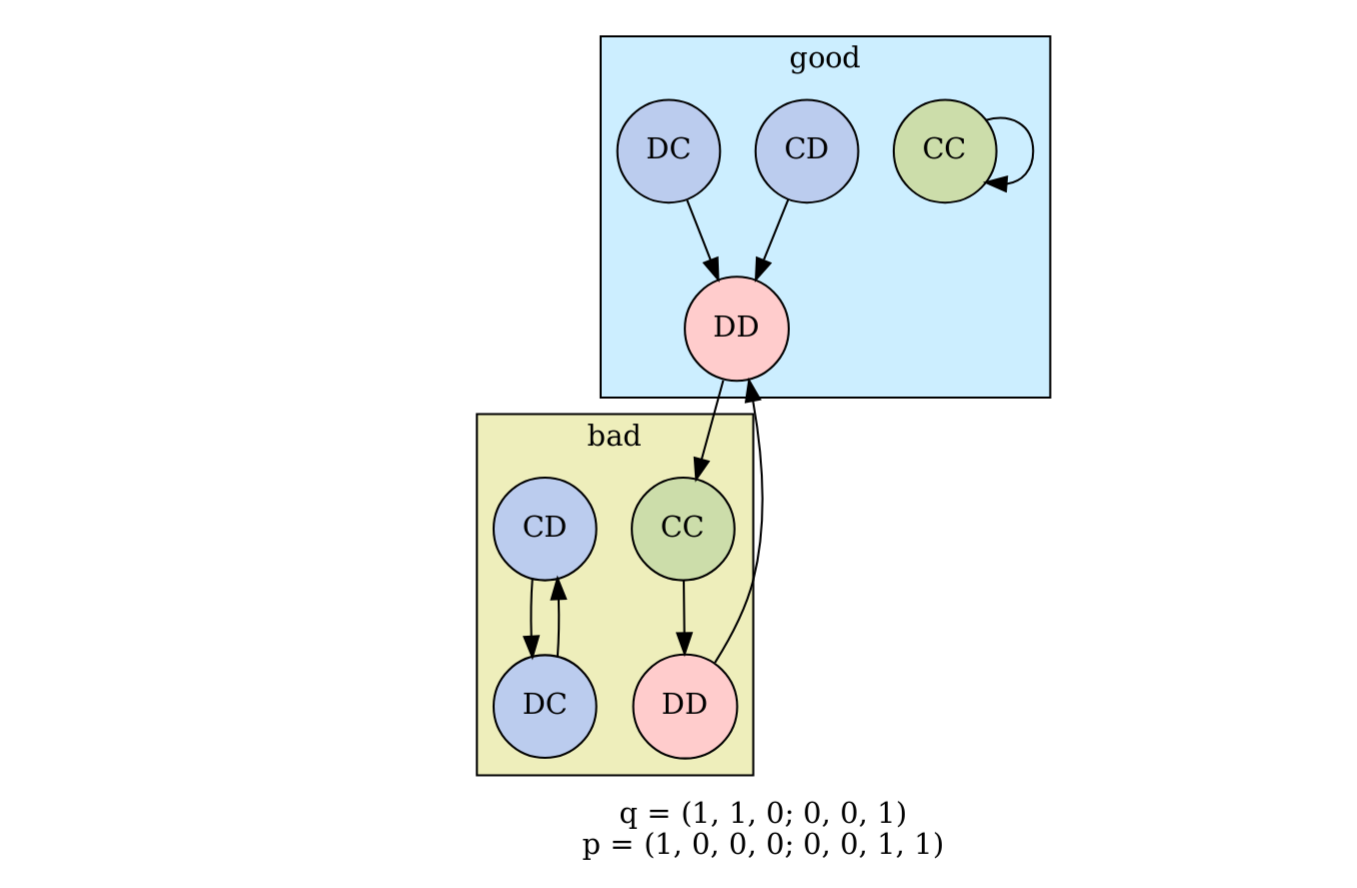 For the past year, I’ve been working in my spare time through a very interesting paper by Kleshnina et al. (2023). The paper concerns an evolutionary game theory model where individuals play an iterated Prisoner’s Dilemma with an environmental feedback. In a previous post, I experimented with a method to automate the identification of the subgame-perfect Nash equilibria and their parameter-value conditions. In this post, I’ll show how the stationary distribution of actions taken during a repeated interaction can be found analytically and solved algorithmically using SymPy. The typical approach requires choosing a specific value for \(\varepsilon\), which is the...
For the past year, I’ve been working in my spare time through a very interesting paper by Kleshnina et al. (2023). The paper concerns an evolutionary game theory model where individuals play an iterated Prisoner’s Dilemma with an environmental feedback. In a previous post, I experimented with a method to automate the identification of the subgame-perfect Nash equilibria and their parameter-value conditions. In this post, I’ll show how the stationary distribution of actions taken during a repeated interaction can be found analytically and solved algorithmically using SymPy. The typical approach requires choosing a specific value for \(\varepsilon\), which is the...
Analytic solution for the stationary distribution in an iterated game with implementation errors
 For the past year, I’ve been working in my spare time through a very interesting paper by Kleshnina et al. (2023). The paper concerns an evolutionary game theory model where individuals play an iterated Prisoner’s Dilemma with an environmental feedback. In a previous post, I experimented with a method to automate the identification of the subgame-perfect Nash equilibria and their parameter-value conditions. In this post, I’ll show how the stationary distribution of actions taken during a repeated interaction can be found analytically and solved algorithmically using SymPy. The typical approach requires choosing a specific value for \(\varepsilon\), which is the...
For the past year, I’ve been working in my spare time through a very interesting paper by Kleshnina et al. (2023). The paper concerns an evolutionary game theory model where individuals play an iterated Prisoner’s Dilemma with an environmental feedback. In a previous post, I experimented with a method to automate the identification of the subgame-perfect Nash equilibria and their parameter-value conditions. In this post, I’ll show how the stationary distribution of actions taken during a repeated interaction can be found analytically and solved algorithmically using SymPy. The typical approach requires choosing a specific value for \(\varepsilon\), which is the...
Sep 24, 2025
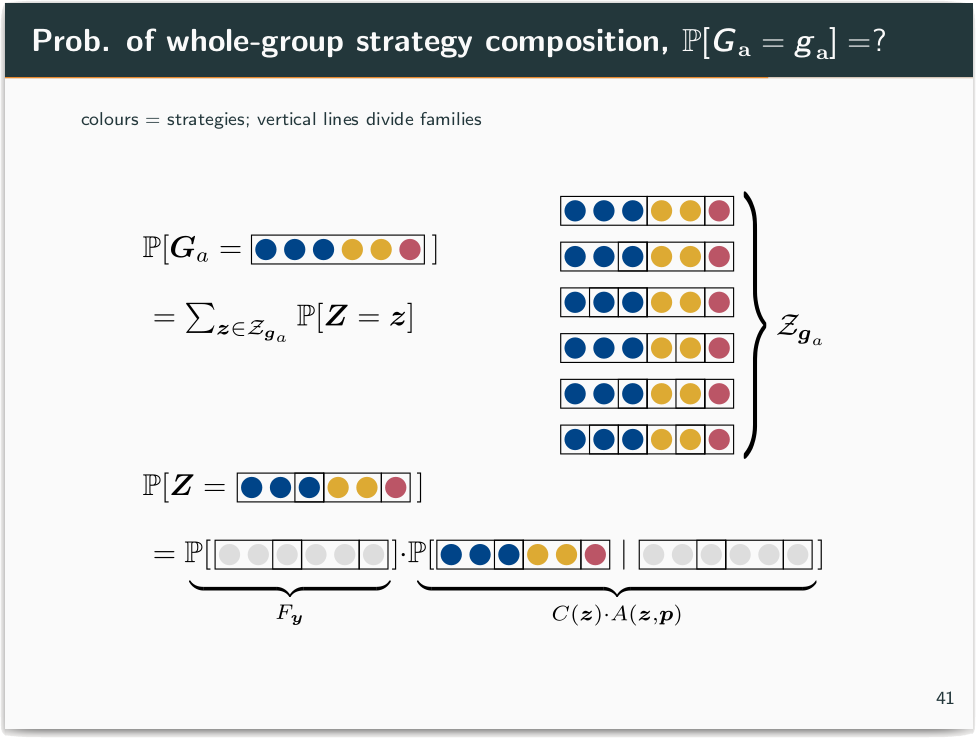 Today,
I gave a talk at Griffith University’s
about my two most recent papers about the evolution of cooperation,
published in Scientific Reports
and Journal of Theoretical Biology.
You can download the full slide deck here: evoln_coopn.pdf.
Some slides from my talk
I have taken an adjunct position there, in addition to my position at
QUT,
and I’m looking forward to regular visits to the lovely Nathan Campus,
which is nestled in Toohey Forest.
Today,
I gave a talk at Griffith University’s
about my two most recent papers about the evolution of cooperation,
published in Scientific Reports
and Journal of Theoretical Biology.
You can download the full slide deck here: evoln_coopn.pdf.
Some slides from my talk
I have taken an adjunct position there, in addition to my position at
QUT,
and I’m looking forward to regular visits to the lovely Nathan Campus,
which is nestled in Toohey Forest.
Evolution of cooperation talk at Griffith University
 Today,
I gave a talk at Griffith University’s
about my two most recent papers about the evolution of cooperation,
published in Scientific Reports
and Journal of Theoretical Biology.
You can download the full slide deck here: evoln_coopn.pdf.
Some slides from my talk
I have taken an adjunct position there, in addition to my position at
QUT,
and I’m looking forward to regular visits to the lovely Nathan Campus,
which is nestled in Toohey Forest.
Today,
I gave a talk at Griffith University’s
about my two most recent papers about the evolution of cooperation,
published in Scientific Reports
and Journal of Theoretical Biology.
You can download the full slide deck here: evoln_coopn.pdf.
Some slides from my talk
I have taken an adjunct position there, in addition to my position at
QUT,
and I’m looking forward to regular visits to the lovely Nathan Campus,
which is nestled in Toohey Forest.
Jun 1, 2025
 In an unpublished paper, Staab et al. (2022) studied the effects of heterogeneity in endowments and productivities on cooperation. They were particularly interested in the effect of allowing players to share the jointly produced goods unequally. Surprisingly, they found that unequal sharing can promote cooperation. In this blog post, first, I offer a proof of one of their propositions. Then I try thinking about their model a little differently to how they presented it, working through some small examples to try to get a visual intuition for what it means. Signs of eigenvalues proof Staab et al. (2022) model an...
In an unpublished paper, Staab et al. (2022) studied the effects of heterogeneity in endowments and productivities on cooperation. They were particularly interested in the effect of allowing players to share the jointly produced goods unequally. Surprisingly, they found that unequal sharing can promote cooperation. In this blog post, first, I offer a proof of one of their propositions. Then I try thinking about their model a little differently to how they presented it, working through some small examples to try to get a visual intuition for what it means. Signs of eigenvalues proof Staab et al. (2022) model an...
Cooperation among unequals
 In an unpublished paper, Staab et al. (2022) studied the effects of heterogeneity in endowments and productivities on cooperation. They were particularly interested in the effect of allowing players to share the jointly produced goods unequally. Surprisingly, they found that unequal sharing can promote cooperation. In this blog post, first, I offer a proof of one of their propositions. Then I try thinking about their model a little differently to how they presented it, working through some small examples to try to get a visual intuition for what it means. Signs of eigenvalues proof Staab et al. (2022) model an...
In an unpublished paper, Staab et al. (2022) studied the effects of heterogeneity in endowments and productivities on cooperation. They were particularly interested in the effect of allowing players to share the jointly produced goods unequally. Surprisingly, they found that unequal sharing can promote cooperation. In this blog post, first, I offer a proof of one of their propositions. Then I try thinking about their model a little differently to how they presented it, working through some small examples to try to get a visual intuition for what it means. Signs of eigenvalues proof Staab et al. (2022) model an...
May 8, 2025
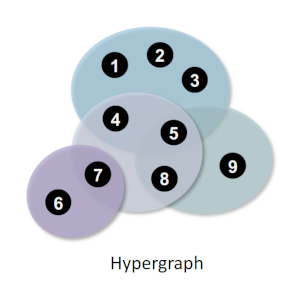 This morning, I attended an engaging virtual workshop on modelling and applications of evolutionary game theory. I extend my sincere thanks to the organisers – Alex McAvoy, Olivia Chu, and Daniel Cooney (bsky) – for their kind invitation and organising the workshop. The presentations in my session were all very interesting. Maria Kleshnina's talk Maria Kleshnina presented an overview of her recent work on iterated games. I’m particularly intrigued by her model where player behaviour receives feedback from the environment, which I’ve previously discussed on my blog here. She also discussed the concept of endowment distributions and sharing rules that...
This morning, I attended an engaging virtual workshop on modelling and applications of evolutionary game theory. I extend my sincere thanks to the organisers – Alex McAvoy, Olivia Chu, and Daniel Cooney (bsky) – for their kind invitation and organising the workshop. The presentations in my session were all very interesting. Maria Kleshnina's talk Maria Kleshnina presented an overview of her recent work on iterated games. I’m particularly intrigued by her model where player behaviour receives feedback from the environment, which I’ve previously discussed on my blog here. She also discussed the concept of endowment distributions and sharing rules that...
Evolutionary game theory virtual workshop
 This morning, I attended an engaging virtual workshop on modelling and applications of evolutionary game theory. I extend my sincere thanks to the organisers – Alex McAvoy, Olivia Chu, and Daniel Cooney (bsky) – for their kind invitation and organising the workshop. The presentations in my session were all very interesting. Maria Kleshnina's talk Maria Kleshnina presented an overview of her recent work on iterated games. I’m particularly intrigued by her model where player behaviour receives feedback from the environment, which I’ve previously discussed on my blog here. She also discussed the concept of endowment distributions and sharing rules that...
This morning, I attended an engaging virtual workshop on modelling and applications of evolutionary game theory. I extend my sincere thanks to the organisers – Alex McAvoy, Olivia Chu, and Daniel Cooney (bsky) – for their kind invitation and organising the workshop. The presentations in my session were all very interesting. Maria Kleshnina's talk Maria Kleshnina presented an overview of her recent work on iterated games. I’m particularly intrigued by her model where player behaviour receives feedback from the environment, which I’ve previously discussed on my blog here. She also discussed the concept of endowment distributions and sharing rules that...
Nov 20, 2024
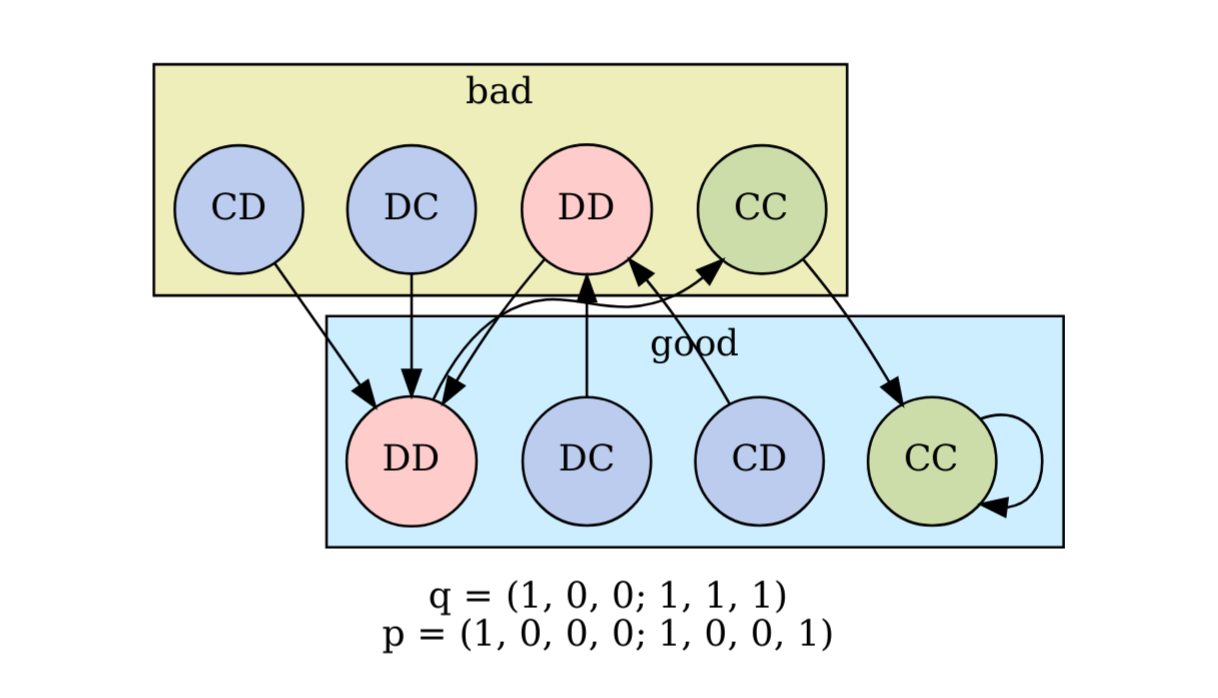 I recently read a paper by Kleshnina et al. (2023), The effect of environmental information on evolution of cooperation in stochastic games, which provided an opportunity to teach myself about how to analyse iterated games. In particular, the problem they investigated admits 64 possible scenarios with 256 possible strategies each, and I was interested in writing code that could automate the analysis. The solution I eventually landed on (Github repo) used a combination of SymPy, NetworkX, SageMath, the Z3 Theorem Prover, and PyEDA for Boolean minimisation, but I think my approach could be improved. Background to the paper Kleshnina et...
I recently read a paper by Kleshnina et al. (2023), The effect of environmental information on evolution of cooperation in stochastic games, which provided an opportunity to teach myself about how to analyse iterated games. In particular, the problem they investigated admits 64 possible scenarios with 256 possible strategies each, and I was interested in writing code that could automate the analysis. The solution I eventually landed on (Github repo) used a combination of SymPy, NetworkX, SageMath, the Z3 Theorem Prover, and PyEDA for Boolean minimisation, but I think my approach could be improved. Background to the paper Kleshnina et...
Check if an iterated Prisoner's Dilemma strategy is a subgame perfect Nash equilibrium
 I recently read a paper by Kleshnina et al. (2023), The effect of environmental information on evolution of cooperation in stochastic games, which provided an opportunity to teach myself about how to analyse iterated games. In particular, the problem they investigated admits 64 possible scenarios with 256 possible strategies each, and I was interested in writing code that could automate the analysis. The solution I eventually landed on (Github repo) used a combination of SymPy, NetworkX, SageMath, the Z3 Theorem Prover, and PyEDA for Boolean minimisation, but I think my approach could be improved. Background to the paper Kleshnina et...
I recently read a paper by Kleshnina et al. (2023), The effect of environmental information on evolution of cooperation in stochastic games, which provided an opportunity to teach myself about how to analyse iterated games. In particular, the problem they investigated admits 64 possible scenarios with 256 possible strategies each, and I was interested in writing code that could automate the analysis. The solution I eventually landed on (Github repo) used a combination of SymPy, NetworkX, SageMath, the Z3 Theorem Prover, and PyEDA for Boolean minimisation, but I think my approach could be improved. Background to the paper Kleshnina et...
Oct 15, 2024
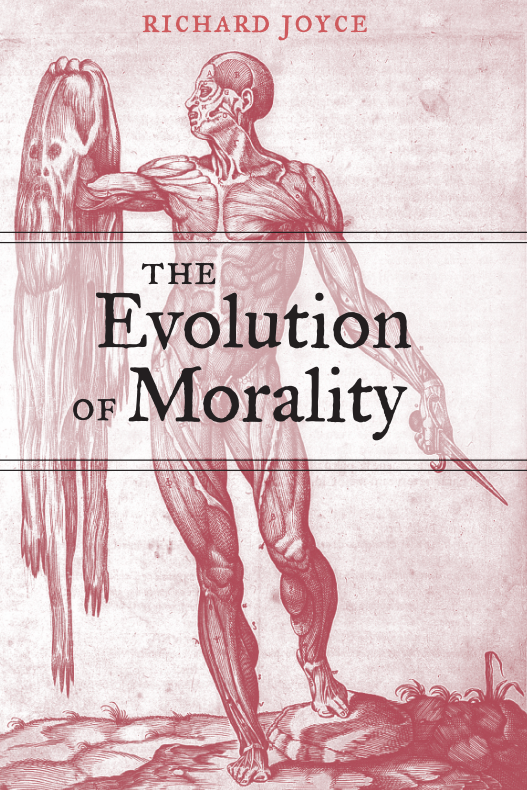 Metal. To learn more about the evolution of cooperation from a philosopher’s perspective, I recently read Richard Joyce’s book The Evolution of Morality. Joyce’s book makes the case for the evolutionary debunking argument, which holds that moral beliefs are the product of evolutionary processes rather than tracking moral truths. While evolution has equipped us with the capacity for moral judgement, this doesn’t necessarily mean that our moral beliefs are true or justified. Instead, our moral sense evolved because it was useful for our ancestors’ survival and reproduction, regardless of whether moral facts actually exist. Joyce begins by examining the evolutionary...
Metal. To learn more about the evolution of cooperation from a philosopher’s perspective, I recently read Richard Joyce’s book The Evolution of Morality. Joyce’s book makes the case for the evolutionary debunking argument, which holds that moral beliefs are the product of evolutionary processes rather than tracking moral truths. While evolution has equipped us with the capacity for moral judgement, this doesn’t necessarily mean that our moral beliefs are true or justified. Instead, our moral sense evolved because it was useful for our ancestors’ survival and reproduction, regardless of whether moral facts actually exist. Joyce begins by examining the evolutionary...
A summary of Richard Joyce's 'The Evolution of Morality'
 Metal. To learn more about the evolution of cooperation from a philosopher’s perspective, I recently read Richard Joyce’s book The Evolution of Morality. Joyce’s book makes the case for the evolutionary debunking argument, which holds that moral beliefs are the product of evolutionary processes rather than tracking moral truths. While evolution has equipped us with the capacity for moral judgement, this doesn’t necessarily mean that our moral beliefs are true or justified. Instead, our moral sense evolved because it was useful for our ancestors’ survival and reproduction, regardless of whether moral facts actually exist. Joyce begins by examining the evolutionary...
Metal. To learn more about the evolution of cooperation from a philosopher’s perspective, I recently read Richard Joyce’s book The Evolution of Morality. Joyce’s book makes the case for the evolutionary debunking argument, which holds that moral beliefs are the product of evolutionary processes rather than tracking moral truths. While evolution has equipped us with the capacity for moral judgement, this doesn’t necessarily mean that our moral beliefs are true or justified. Instead, our moral sense evolved because it was useful for our ancestors’ survival and reproduction, regardless of whether moral facts actually exist. Joyce begins by examining the evolutionary...
Apr 15, 2024
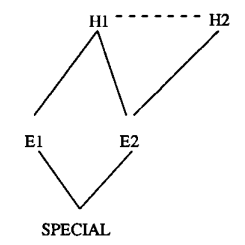 Human reasoning often defies the ideal of normative inference, where conclusions should logically follow from evidence. Instead, we frequently engage in ‘backward reasoning’, starting with preferred conclusions and selectively seeking supporting evidence while discounting contradictory information. This tendency reflects a broader cognitive preference for beliefs that align with our existing worldview. This inclination towards coherent beliefs contrasts sharply with foundationalist approaches to knowledge, which advocate building beliefs from self-evident truths (e.g., Descartes’ “I think; therefore, I am”). Our belief systems instead resemble intricate webs, characterised by complex interdependencies rather than clear hierarchies. Coherence-based reasoning is a cognitive model that attempts...
Human reasoning often defies the ideal of normative inference, where conclusions should logically follow from evidence. Instead, we frequently engage in ‘backward reasoning’, starting with preferred conclusions and selectively seeking supporting evidence while discounting contradictory information. This tendency reflects a broader cognitive preference for beliefs that align with our existing worldview. This inclination towards coherent beliefs contrasts sharply with foundationalist approaches to knowledge, which advocate building beliefs from self-evident truths (e.g., Descartes’ “I think; therefore, I am”). Our belief systems instead resemble intricate webs, characterised by complex interdependencies rather than clear hierarchies. Coherence-based reasoning is a cognitive model that attempts...
Coherence-based reasoning and the downplaying of contrary evidence
 Human reasoning often defies the ideal of normative inference, where conclusions should logically follow from evidence. Instead, we frequently engage in ‘backward reasoning’, starting with preferred conclusions and selectively seeking supporting evidence while discounting contradictory information. This tendency reflects a broader cognitive preference for beliefs that align with our existing worldview. This inclination towards coherent beliefs contrasts sharply with foundationalist approaches to knowledge, which advocate building beliefs from self-evident truths (e.g., Descartes’ “I think; therefore, I am”). Our belief systems instead resemble intricate webs, characterised by complex interdependencies rather than clear hierarchies. Coherence-based reasoning is a cognitive model that attempts...
Human reasoning often defies the ideal of normative inference, where conclusions should logically follow from evidence. Instead, we frequently engage in ‘backward reasoning’, starting with preferred conclusions and selectively seeking supporting evidence while discounting contradictory information. This tendency reflects a broader cognitive preference for beliefs that align with our existing worldview. This inclination towards coherent beliefs contrasts sharply with foundationalist approaches to knowledge, which advocate building beliefs from self-evident truths (e.g., Descartes’ “I think; therefore, I am”). Our belief systems instead resemble intricate webs, characterised by complex interdependencies rather than clear hierarchies. Coherence-based reasoning is a cognitive model that attempts...
Jan 15, 2024
 I read a very interesting new paper by Padget et al. (2023), published late last year in Proceedings of the Royal Society B. The paper describes an experimental study of guppies’ predator-inspection behaviour, and it presents a bit of a mystery and a challenge to theoreticians. Many fishes perform predator-inspection, which is when a small number of individuals will break away from the main group and approach a potential predator (Dugatkin, 1988). Performing the inspection is risky behaviour, but it also benefits the group; it can provide the information needed to either escape or return foraging if there’s no real...
I read a very interesting new paper by Padget et al. (2023), published late last year in Proceedings of the Royal Society B. The paper describes an experimental study of guppies’ predator-inspection behaviour, and it presents a bit of a mystery and a challenge to theoreticians. Many fishes perform predator-inspection, which is when a small number of individuals will break away from the main group and approach a potential predator (Dugatkin, 1988). Performing the inspection is risky behaviour, but it also benefits the group; it can provide the information needed to either escape or return foraging if there’s no real...
Guppy predator inspection
 I read a very interesting new paper by Padget et al. (2023), published late last year in Proceedings of the Royal Society B. The paper describes an experimental study of guppies’ predator-inspection behaviour, and it presents a bit of a mystery and a challenge to theoreticians. Many fishes perform predator-inspection, which is when a small number of individuals will break away from the main group and approach a potential predator (Dugatkin, 1988). Performing the inspection is risky behaviour, but it also benefits the group; it can provide the information needed to either escape or return foraging if there’s no real...
I read a very interesting new paper by Padget et al. (2023), published late last year in Proceedings of the Royal Society B. The paper describes an experimental study of guppies’ predator-inspection behaviour, and it presents a bit of a mystery and a challenge to theoreticians. Many fishes perform predator-inspection, which is when a small number of individuals will break away from the main group and approach a potential predator (Dugatkin, 1988). Performing the inspection is risky behaviour, but it also benefits the group; it can provide the information needed to either escape or return foraging if there’s no real...
Oct 31, 2023
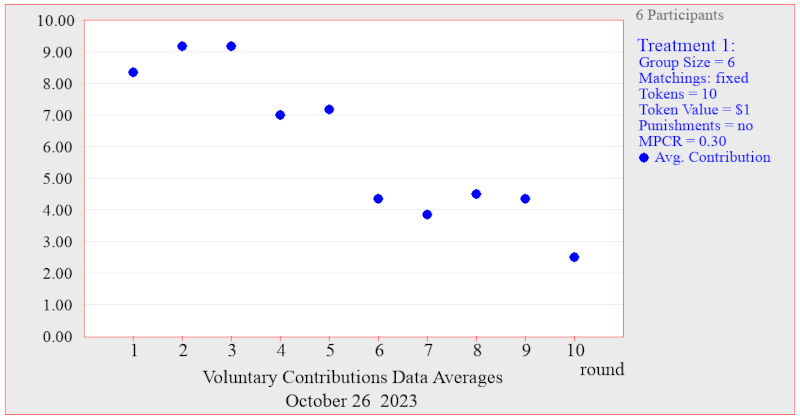 Each year since 2017, I’ve been taking one lecture for Ryan’s subject LSM4255 Methods in Mathematical Biology, teaching evolutionary game theory and adaptive dynamics. After the class, we usually have a tutorial where we play the fishing game, a simulation of a fishery that teaches students about the tragedy of the commons. Screenshot from the fishing game, which was sadly not available this year. Unfortunately, the fishing game was unexpectedly unavailable this year, but I was able to find a very nice last-minute alternative. Charles Holt at the University of Virginia has made available the Veconlab software, a collection of...
Each year since 2017, I’ve been taking one lecture for Ryan’s subject LSM4255 Methods in Mathematical Biology, teaching evolutionary game theory and adaptive dynamics. After the class, we usually have a tutorial where we play the fishing game, a simulation of a fishery that teaches students about the tragedy of the commons. Screenshot from the fishing game, which was sadly not available this year. Unfortunately, the fishing game was unexpectedly unavailable this year, but I was able to find a very nice last-minute alternative. Charles Holt at the University of Virginia has made available the Veconlab software, a collection of...
Web-based public goods game and other experiments for teaching
 Each year since 2017, I’ve been taking one lecture for Ryan’s subject LSM4255 Methods in Mathematical Biology, teaching evolutionary game theory and adaptive dynamics. After the class, we usually have a tutorial where we play the fishing game, a simulation of a fishery that teaches students about the tragedy of the commons. Screenshot from the fishing game, which was sadly not available this year. Unfortunately, the fishing game was unexpectedly unavailable this year, but I was able to find a very nice last-minute alternative. Charles Holt at the University of Virginia has made available the Veconlab software, a collection of...
Each year since 2017, I’ve been taking one lecture for Ryan’s subject LSM4255 Methods in Mathematical Biology, teaching evolutionary game theory and adaptive dynamics. After the class, we usually have a tutorial where we play the fishing game, a simulation of a fishery that teaches students about the tragedy of the commons. Screenshot from the fishing game, which was sadly not available this year. Unfortunately, the fishing game was unexpectedly unavailable this year, but I was able to find a very nice last-minute alternative. Charles Holt at the University of Virginia has made available the Veconlab software, a collection of...
Jul 14, 2023
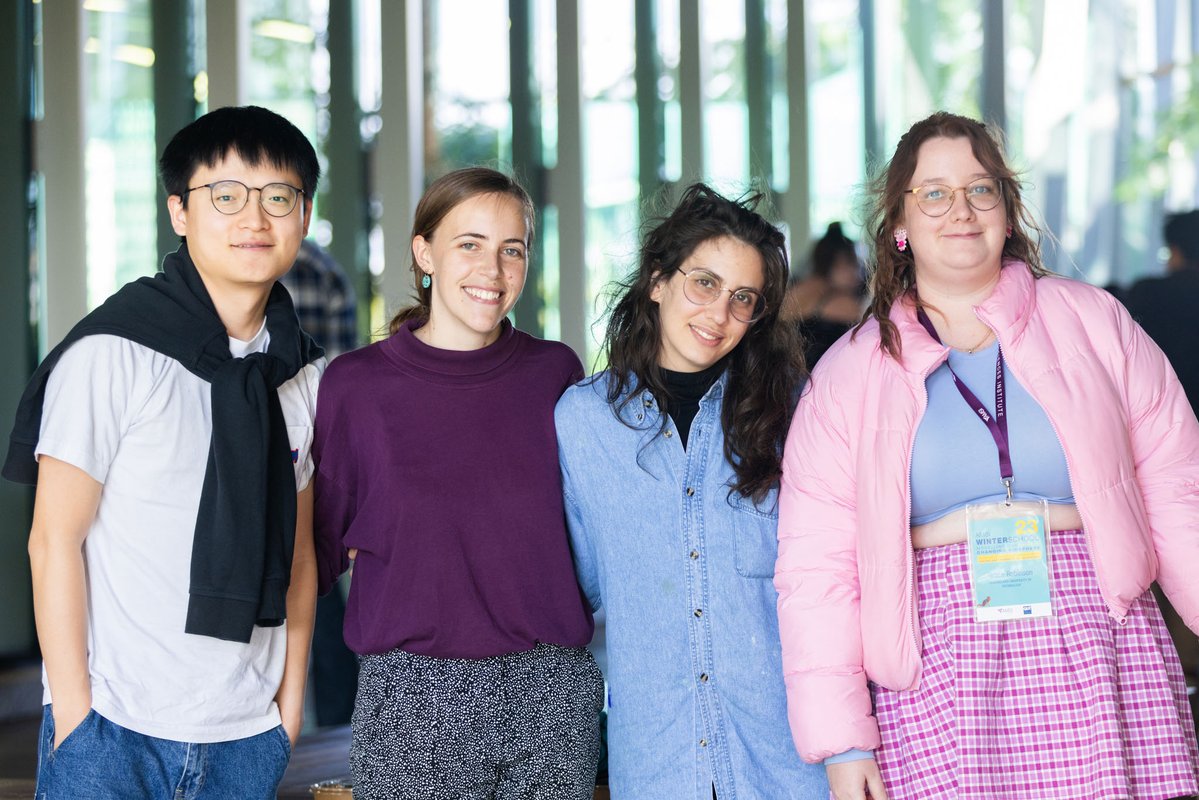 For 2 weeks, I’ve been teaching at and attending the AMSI Winter School at QUT (Mastodon thread about it here). The winter school is an annual event for postgrads, early-career researchers, and industry professionals, and about 40 students attended this year. Some students from the Winter School. I was one of four presenters on the theme Modelling Our Changing Biosphere. I taught about evolutionary game theory, and we also learnt about modelling fisheries (with Nokuthaba Sibanda from University of Wellington), reinforcement learning (with Carl Boettiger from University of California), model sloppiness (with Matthew Adams from Queensland University of Technology), and...
For 2 weeks, I’ve been teaching at and attending the AMSI Winter School at QUT (Mastodon thread about it here). The winter school is an annual event for postgrads, early-career researchers, and industry professionals, and about 40 students attended this year. Some students from the Winter School. I was one of four presenters on the theme Modelling Our Changing Biosphere. I taught about evolutionary game theory, and we also learnt about modelling fisheries (with Nokuthaba Sibanda from University of Wellington), reinforcement learning (with Carl Boettiger from University of California), model sloppiness (with Matthew Adams from Queensland University of Technology), and...
AMSI Winter School
 For 2 weeks, I’ve been teaching at and attending the AMSI Winter School at QUT (Mastodon thread about it here). The winter school is an annual event for postgrads, early-career researchers, and industry professionals, and about 40 students attended this year. Some students from the Winter School. I was one of four presenters on the theme Modelling Our Changing Biosphere. I taught about evolutionary game theory, and we also learnt about modelling fisheries (with Nokuthaba Sibanda from University of Wellington), reinforcement learning (with Carl Boettiger from University of California), model sloppiness (with Matthew Adams from Queensland University of Technology), and...
For 2 weeks, I’ve been teaching at and attending the AMSI Winter School at QUT (Mastodon thread about it here). The winter school is an annual event for postgrads, early-career researchers, and industry professionals, and about 40 students attended this year. Some students from the Winter School. I was one of four presenters on the theme Modelling Our Changing Biosphere. I taught about evolutionary game theory, and we also learnt about modelling fisheries (with Nokuthaba Sibanda from University of Wellington), reinforcement learning (with Carl Boettiger from University of California), model sloppiness (with Matthew Adams from Queensland University of Technology), and...
Apr 29, 2023
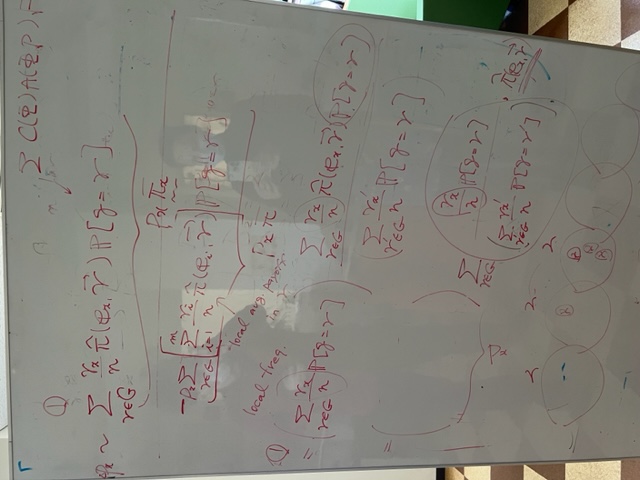 For the past 5 weeks, I’ve been visiting Hisashi Ohtsuki at SOKENDAI in Japan to work on our evolutionary game theory project. We’ve been collaborating with Hisashi over the past couple of years exploring questions related to the evolution of cooperation using a novel mathematical framework that accounts for higher-order genetic associations. This work resulted in a publication a few months ago. We’ve been putting the final touches on our extension of the higher-order genetic associations approach, to extend the scenario to games with many different strategies, and I’ll be here for another month so we can explore some new...
For the past 5 weeks, I’ve been visiting Hisashi Ohtsuki at SOKENDAI in Japan to work on our evolutionary game theory project. We’ve been collaborating with Hisashi over the past couple of years exploring questions related to the evolution of cooperation using a novel mathematical framework that accounts for higher-order genetic associations. This work resulted in a publication a few months ago. We’ve been putting the final touches on our extension of the higher-order genetic associations approach, to extend the scenario to games with many different strategies, and I’ll be here for another month so we can explore some new...
Visiting Hisashi Ohtsuki
 For the past 5 weeks, I’ve been visiting Hisashi Ohtsuki at SOKENDAI in Japan to work on our evolutionary game theory project. We’ve been collaborating with Hisashi over the past couple of years exploring questions related to the evolution of cooperation using a novel mathematical framework that accounts for higher-order genetic associations. This work resulted in a publication a few months ago. We’ve been putting the final touches on our extension of the higher-order genetic associations approach, to extend the scenario to games with many different strategies, and I’ll be here for another month so we can explore some new...
For the past 5 weeks, I’ve been visiting Hisashi Ohtsuki at SOKENDAI in Japan to work on our evolutionary game theory project. We’ve been collaborating with Hisashi over the past couple of years exploring questions related to the evolution of cooperation using a novel mathematical framework that accounts for higher-order genetic associations. This work resulted in a publication a few months ago. We’ve been putting the final touches on our extension of the higher-order genetic associations approach, to extend the scenario to games with many different strategies, and I’ll be here for another month so we can explore some new...
Dec 1, 2022
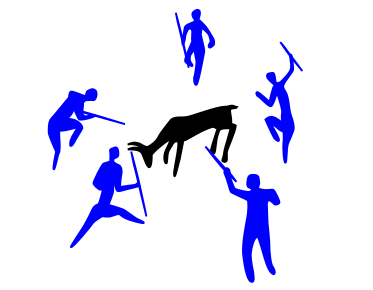 When people play public goods games in lab-based experiments, they often cooperate even though it goes against their self interest. Many authors have pointed out the ways in which such experiments can be unrealistic, e.g., by enforcing anonymity between participants, and they have discussed how the incentives in a one-shot encounter differ from when interactions are repeated within the same group. In our recent paper, we focused on another common assumption that has received less attention: the benefits in real-life public goods games are almost never linear. We were interested in the implications of this nonlinearity for the evolution of...
When people play public goods games in lab-based experiments, they often cooperate even though it goes against their self interest. Many authors have pointed out the ways in which such experiments can be unrealistic, e.g., by enforcing anonymity between participants, and they have discussed how the incentives in a one-shot encounter differ from when interactions are repeated within the same group. In our recent paper, we focused on another common assumption that has received less attention: the benefits in real-life public goods games are almost never linear. We were interested in the implications of this nonlinearity for the evolution of...
Evolution of cooperation
 When people play public goods games in lab-based experiments, they often cooperate even though it goes against their self interest. Many authors have pointed out the ways in which such experiments can be unrealistic, e.g., by enforcing anonymity between participants, and they have discussed how the incentives in a one-shot encounter differ from when interactions are repeated within the same group. In our recent paper, we focused on another common assumption that has received less attention: the benefits in real-life public goods games are almost never linear. We were interested in the implications of this nonlinearity for the evolution of...
When people play public goods games in lab-based experiments, they often cooperate even though it goes against their self interest. Many authors have pointed out the ways in which such experiments can be unrealistic, e.g., by enforcing anonymity between participants, and they have discussed how the incentives in a one-shot encounter differ from when interactions are repeated within the same group. In our recent paper, we focused on another common assumption that has received less attention: the benefits in real-life public goods games are almost never linear. We were interested in the implications of this nonlinearity for the evolution of...
Nov 29, 2022
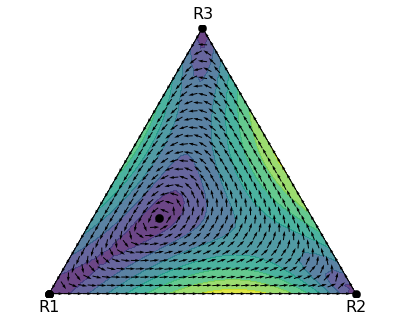 Recently, I set a task for a student to use Python to analyse the replicator dynamics of a game with three strategies, including using the Jacobian to determine the stability of the steady state. The purpose of this blog post is to share the solution in case that’s useful to someone. The game For this task, we will consider the replicator dynamics of a 2-player game with 3 strategies. Recall the general equation for the replicator dynamics is \[\begin{equation} \dot{p}_i = p_i (f_i - \bar{f}) \end{equation}\] where \(p_i\) is proportion of \(i\)-strategists in the population, \(f_i\) is fitness effect of...
Recently, I set a task for a student to use Python to analyse the replicator dynamics of a game with three strategies, including using the Jacobian to determine the stability of the steady state. The purpose of this blog post is to share the solution in case that’s useful to someone. The game For this task, we will consider the replicator dynamics of a 2-player game with 3 strategies. Recall the general equation for the replicator dynamics is \[\begin{equation} \dot{p}_i = p_i (f_i - \bar{f}) \end{equation}\] where \(p_i\) is proportion of \(i\)-strategists in the population, \(f_i\) is fitness effect of...
Example numerical analysis of replicator dynamics with more than 2 strategies
 Recently, I set a task for a student to use Python to analyse the replicator dynamics of a game with three strategies, including using the Jacobian to determine the stability of the steady state. The purpose of this blog post is to share the solution in case that’s useful to someone. The game For this task, we will consider the replicator dynamics of a 2-player game with 3 strategies. Recall the general equation for the replicator dynamics is \[\begin{equation} \dot{p}_i = p_i (f_i - \bar{f}) \end{equation}\] where \(p_i\) is proportion of \(i\)-strategists in the population, \(f_i\) is fitness effect of...
Recently, I set a task for a student to use Python to analyse the replicator dynamics of a game with three strategies, including using the Jacobian to determine the stability of the steady state. The purpose of this blog post is to share the solution in case that’s useful to someone. The game For this task, we will consider the replicator dynamics of a 2-player game with 3 strategies. Recall the general equation for the replicator dynamics is \[\begin{equation} \dot{p}_i = p_i (f_i - \bar{f}) \end{equation}\] where \(p_i\) is proportion of \(i\)-strategists in the population, \(f_i\) is fitness effect of...
Nov 10, 2022
 I recently read a classic paper by anthropologist Jones (2000), ‘Group nepotism and human kinship’, which argues that collective action may explain some of the key features of human cooperation between kin. Collective action here is action by a group (e.g., clan, tribe) that has sufficient ingroup solidarity to decide how to act as a collective. The key features it may help explain are: 1. the ‘axiom of amity’, that one is obliged to help kin just because they’re kin; 2. that kin groups come in many sizes and can be quite large; and 3. that human notions of kinship...
I recently read a classic paper by anthropologist Jones (2000), ‘Group nepotism and human kinship’, which argues that collective action may explain some of the key features of human cooperation between kin. Collective action here is action by a group (e.g., clan, tribe) that has sufficient ingroup solidarity to decide how to act as a collective. The key features it may help explain are: 1. the ‘axiom of amity’, that one is obliged to help kin just because they’re kin; 2. that kin groups come in many sizes and can be quite large; and 3. that human notions of kinship...
Group nepotism and the Brothers Karamazov Game
 I recently read a classic paper by anthropologist Jones (2000), ‘Group nepotism and human kinship’, which argues that collective action may explain some of the key features of human cooperation between kin. Collective action here is action by a group (e.g., clan, tribe) that has sufficient ingroup solidarity to decide how to act as a collective. The key features it may help explain are: 1. the ‘axiom of amity’, that one is obliged to help kin just because they’re kin; 2. that kin groups come in many sizes and can be quite large; and 3. that human notions of kinship...
I recently read a classic paper by anthropologist Jones (2000), ‘Group nepotism and human kinship’, which argues that collective action may explain some of the key features of human cooperation between kin. Collective action here is action by a group (e.g., clan, tribe) that has sufficient ingroup solidarity to decide how to act as a collective. The key features it may help explain are: 1. the ‘axiom of amity’, that one is obliged to help kin just because they’re kin; 2. that kin groups come in many sizes and can be quite large; and 3. that human notions of kinship...
Aug 1, 2022
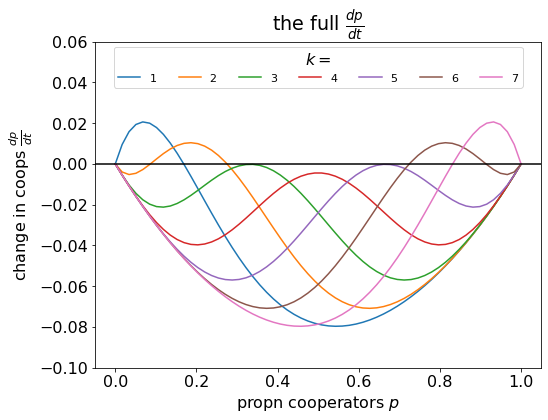 Last month, I chose a paper by Kris De Jaegher in Scientific Reports for our weekly lab-meeting discussion. We used the paper to teach ourselves about threshold games, and the purpose of this blog post is to summarise the things we learnt. Replicator dynamics revision De Jaegher used the replicator dynamics approach. Replicator dynamics assumes a well-mixed, infinitely large population of players that reproduces asexually, where the number of offspring they produce depends upon the payoff they receive from a game-theoretic ‘game’, as illustrated below:– Replicator dynamics animation, created by HowieKor (Creative Commons) We start with a population of \(n\)...
Last month, I chose a paper by Kris De Jaegher in Scientific Reports for our weekly lab-meeting discussion. We used the paper to teach ourselves about threshold games, and the purpose of this blog post is to summarise the things we learnt. Replicator dynamics revision De Jaegher used the replicator dynamics approach. Replicator dynamics assumes a well-mixed, infinitely large population of players that reproduces asexually, where the number of offspring they produce depends upon the payoff they receive from a game-theoretic ‘game’, as illustrated below:– Replicator dynamics animation, created by HowieKor (Creative Commons) We start with a population of \(n\)...
Lab meeting about threshold games
 Last month, I chose a paper by Kris De Jaegher in Scientific Reports for our weekly lab-meeting discussion. We used the paper to teach ourselves about threshold games, and the purpose of this blog post is to summarise the things we learnt. Replicator dynamics revision De Jaegher used the replicator dynamics approach. Replicator dynamics assumes a well-mixed, infinitely large population of players that reproduces asexually, where the number of offspring they produce depends upon the payoff they receive from a game-theoretic ‘game’, as illustrated below:– Replicator dynamics animation, created by HowieKor (Creative Commons) We start with a population of \(n\)...
Last month, I chose a paper by Kris De Jaegher in Scientific Reports for our weekly lab-meeting discussion. We used the paper to teach ourselves about threshold games, and the purpose of this blog post is to summarise the things we learnt. Replicator dynamics revision De Jaegher used the replicator dynamics approach. Replicator dynamics assumes a well-mixed, infinitely large population of players that reproduces asexually, where the number of offspring they produce depends upon the payoff they receive from a game-theoretic ‘game’, as illustrated below:– Replicator dynamics animation, created by HowieKor (Creative Commons) We start with a population of \(n\)...
Apr 1, 2022
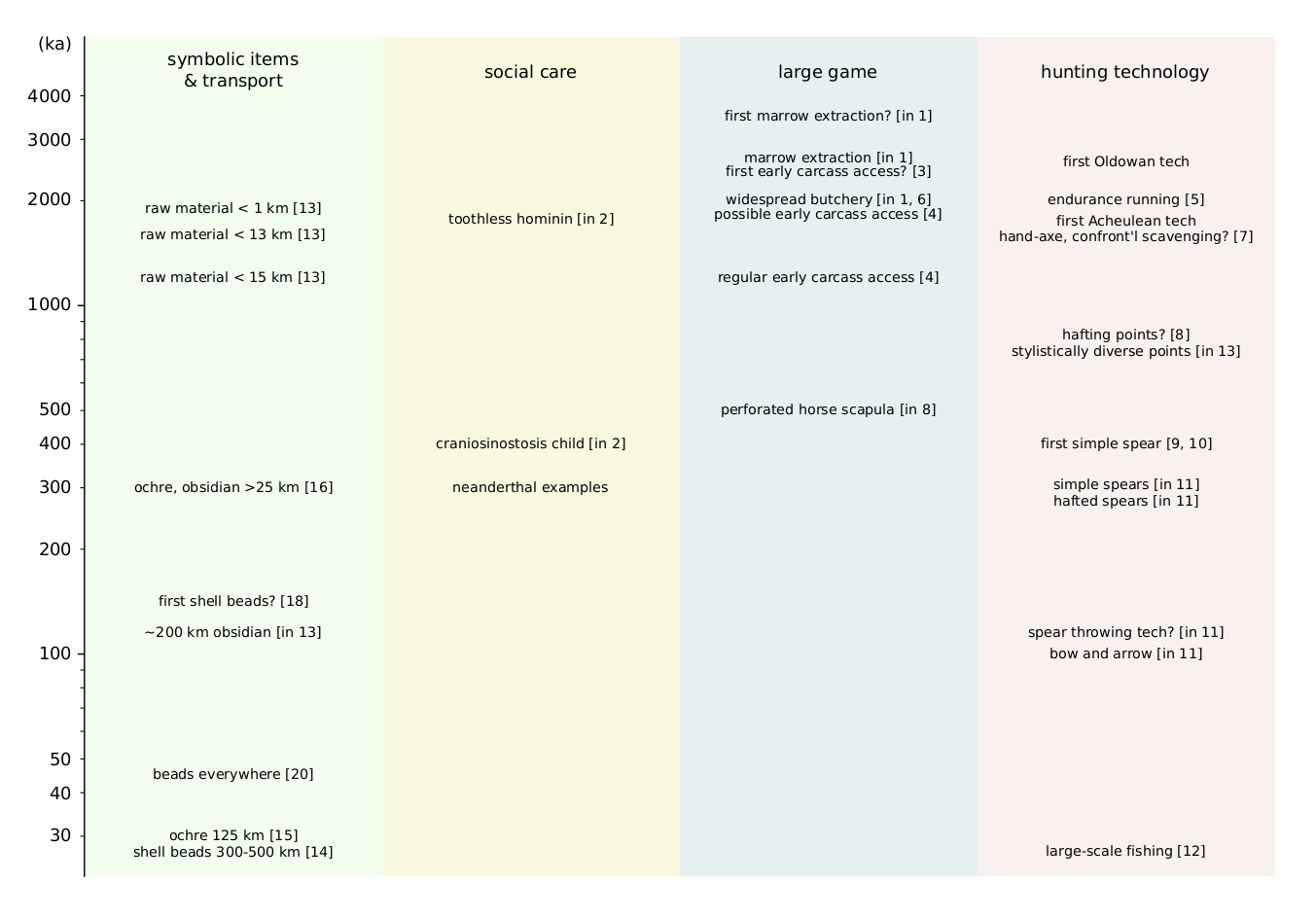 It is generally held that human cooperation first evolved in our ancestral past, when we tended to live in small groups composed mostly of family members, and when cooperation could therefore be selected for by kin selection. This narrative is also sometimes invoked to explain the origin of cooperative mechanisms that are primarily about cooperation between nonkin. For example, in the iterated Prisoner’s Dilemma, cooperation between nonkin can be maintained by the tit-for-tat strategy, and a population of tit-for-tat players can resist invasion by defectors. However, tit-for-tat strategists cannot invade a population of defectors (presumably the primordial strategy), and so...
It is generally held that human cooperation first evolved in our ancestral past, when we tended to live in small groups composed mostly of family members, and when cooperation could therefore be selected for by kin selection. This narrative is also sometimes invoked to explain the origin of cooperative mechanisms that are primarily about cooperation between nonkin. For example, in the iterated Prisoner’s Dilemma, cooperation between nonkin can be maintained by the tit-for-tat strategy, and a population of tit-for-tat players can resist invasion by defectors. However, tit-for-tat strategists cannot invade a population of defectors (presumably the primordial strategy), and so...
Human cooperation and social network expansion over time
 It is generally held that human cooperation first evolved in our ancestral past, when we tended to live in small groups composed mostly of family members, and when cooperation could therefore be selected for by kin selection. This narrative is also sometimes invoked to explain the origin of cooperative mechanisms that are primarily about cooperation between nonkin. For example, in the iterated Prisoner’s Dilemma, cooperation between nonkin can be maintained by the tit-for-tat strategy, and a population of tit-for-tat players can resist invasion by defectors. However, tit-for-tat strategists cannot invade a population of defectors (presumably the primordial strategy), and so...
It is generally held that human cooperation first evolved in our ancestral past, when we tended to live in small groups composed mostly of family members, and when cooperation could therefore be selected for by kin selection. This narrative is also sometimes invoked to explain the origin of cooperative mechanisms that are primarily about cooperation between nonkin. For example, in the iterated Prisoner’s Dilemma, cooperation between nonkin can be maintained by the tit-for-tat strategy, and a population of tit-for-tat players can resist invasion by defectors. However, tit-for-tat strategists cannot invade a population of defectors (presumably the primordial strategy), and so...
Mar 1, 2022
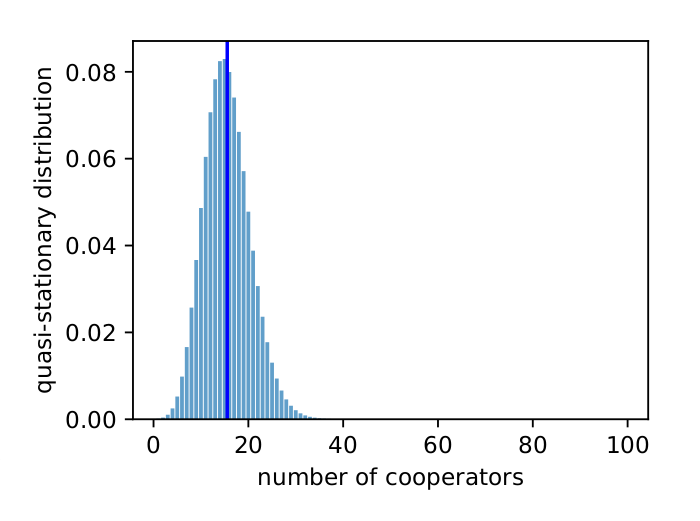 The purpose of this blog post is to use a recent paper by Tutić (2021) to teach myself about stochastic evolutionary game theory. Tutić’s (2021) model concerns the Volunteer’s Dilemma, which is a public goods game where the public good is provided if at least one group member cooperates. In the replicator dynamics, cooperators can always invade a population of defectors. However, as the group size increases, the proportion of cooperators in the population at the evolutionary steady-state declines (see Tutić (2021) Fig. 6), which increases the risk that cooperators will be lost from a finite population where stochastic forces...
The purpose of this blog post is to use a recent paper by Tutić (2021) to teach myself about stochastic evolutionary game theory. Tutić’s (2021) model concerns the Volunteer’s Dilemma, which is a public goods game where the public good is provided if at least one group member cooperates. In the replicator dynamics, cooperators can always invade a population of defectors. However, as the group size increases, the proportion of cooperators in the population at the evolutionary steady-state declines (see Tutić (2021) Fig. 6), which increases the risk that cooperators will be lost from a finite population where stochastic forces...
Stochastic evolutionary dynamics of the Volunteers' Dilemma
 The purpose of this blog post is to use a recent paper by Tutić (2021) to teach myself about stochastic evolutionary game theory. Tutić’s (2021) model concerns the Volunteer’s Dilemma, which is a public goods game where the public good is provided if at least one group member cooperates. In the replicator dynamics, cooperators can always invade a population of defectors. However, as the group size increases, the proportion of cooperators in the population at the evolutionary steady-state declines (see Tutić (2021) Fig. 6), which increases the risk that cooperators will be lost from a finite population where stochastic forces...
The purpose of this blog post is to use a recent paper by Tutić (2021) to teach myself about stochastic evolutionary game theory. Tutić’s (2021) model concerns the Volunteer’s Dilemma, which is a public goods game where the public good is provided if at least one group member cooperates. In the replicator dynamics, cooperators can always invade a population of defectors. However, as the group size increases, the proportion of cooperators in the population at the evolutionary steady-state declines (see Tutić (2021) Fig. 6), which increases the risk that cooperators will be lost from a finite population where stochastic forces...
Feb 1, 2022
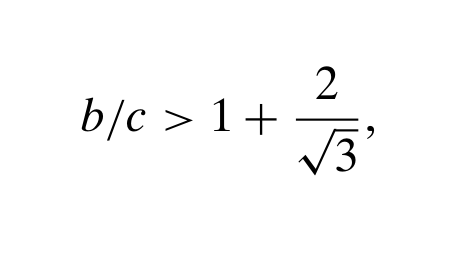 To calculate the conditions under which selection favours cooperation, Antal et al. (2009) used interaction probabilities calculated from a coalescence model. However, a coalescence model is a neutral model, it assumes no selective differences between types. So why can they assume no selective difference between types in a selective model? The purpose of this blog post is to explore the explanation detailed in their SI. First, a quick overview of the paper. The model involves the simultaneous evolution of two traits: (1) the strategy in a one-shot Prisoner’s Dilemma, either Cooperate or Defect; and (2) a phenotypic tag, modelled as...
To calculate the conditions under which selection favours cooperation, Antal et al. (2009) used interaction probabilities calculated from a coalescence model. However, a coalescence model is a neutral model, it assumes no selective differences between types. So why can they assume no selective difference between types in a selective model? The purpose of this blog post is to explore the explanation detailed in their SI. First, a quick overview of the paper. The model involves the simultaneous evolution of two traits: (1) the strategy in a one-shot Prisoner’s Dilemma, either Cooperate or Defect; and (2) a phenotypic tag, modelled as...
Using coalescence models to approximate interaction probabilities in weak selection
 To calculate the conditions under which selection favours cooperation, Antal et al. (2009) used interaction probabilities calculated from a coalescence model. However, a coalescence model is a neutral model, it assumes no selective differences between types. So why can they assume no selective difference between types in a selective model? The purpose of this blog post is to explore the explanation detailed in their SI. First, a quick overview of the paper. The model involves the simultaneous evolution of two traits: (1) the strategy in a one-shot Prisoner’s Dilemma, either Cooperate or Defect; and (2) a phenotypic tag, modelled as...
To calculate the conditions under which selection favours cooperation, Antal et al. (2009) used interaction probabilities calculated from a coalescence model. However, a coalescence model is a neutral model, it assumes no selective differences between types. So why can they assume no selective difference between types in a selective model? The purpose of this blog post is to explore the explanation detailed in their SI. First, a quick overview of the paper. The model involves the simultaneous evolution of two traits: (1) the strategy in a one-shot Prisoner’s Dilemma, either Cooperate or Defect; and (2) a phenotypic tag, modelled as...
Dec 12, 2021
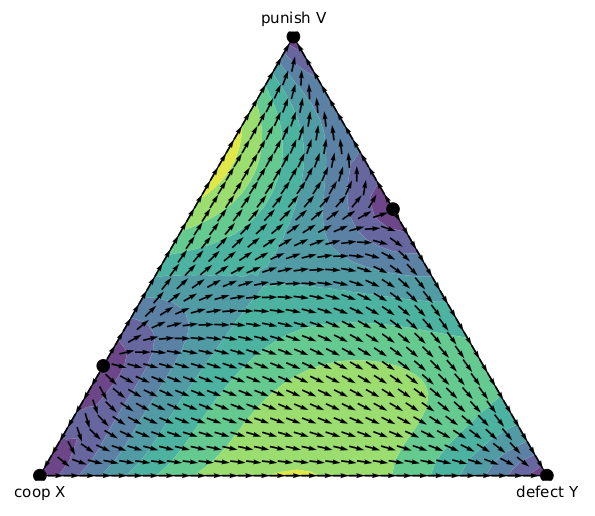 A series of papers by Jorge Peña and others provide a neat way to characterise the replicator dynamics of two-strategy nonlinear public goods games with random group formation (Peña et al. 2014, Peña et al. 2015, Peña & Nöldeke 2016, Nöldeke & Peña 2016, Peña & Nöldeke 2018, Nöldeke & Peña 2020). I this blog post, I used a paper by Archetti (2018) to teach myself more about the topic. Archetti (2018) considered replicator dynamics in a population of producers (cooperators) and defectors. The probability that \(i\) of the \(n-1\) other members in your group are cooperators is \[p_{i,n-1}(x) =...
A series of papers by Jorge Peña and others provide a neat way to characterise the replicator dynamics of two-strategy nonlinear public goods games with random group formation (Peña et al. 2014, Peña et al. 2015, Peña & Nöldeke 2016, Nöldeke & Peña 2016, Peña & Nöldeke 2018, Nöldeke & Peña 2020). I this blog post, I used a paper by Archetti (2018) to teach myself more about the topic. Archetti (2018) considered replicator dynamics in a population of producers (cooperators) and defectors. The probability that \(i\) of the \(n-1\) other members in your group are cooperators is \[p_{i,n-1}(x) =...
Connection between replicator dynamics, Bernstein polynomials, and Bezier curves
 A series of papers by Jorge Peña and others provide a neat way to characterise the replicator dynamics of two-strategy nonlinear public goods games with random group formation (Peña et al. 2014, Peña et al. 2015, Peña & Nöldeke 2016, Nöldeke & Peña 2016, Peña & Nöldeke 2018, Nöldeke & Peña 2020). I this blog post, I used a paper by Archetti (2018) to teach myself more about the topic. Archetti (2018) considered replicator dynamics in a population of producers (cooperators) and defectors. The probability that \(i\) of the \(n-1\) other members in your group are cooperators is \[p_{i,n-1}(x) =...
A series of papers by Jorge Peña and others provide a neat way to characterise the replicator dynamics of two-strategy nonlinear public goods games with random group formation (Peña et al. 2014, Peña et al. 2015, Peña & Nöldeke 2016, Nöldeke & Peña 2016, Peña & Nöldeke 2018, Nöldeke & Peña 2020). I this blog post, I used a paper by Archetti (2018) to teach myself more about the topic. Archetti (2018) considered replicator dynamics in a population of producers (cooperators) and defectors. The probability that \(i\) of the \(n-1\) other members in your group are cooperators is \[p_{i,n-1}(x) =...
Nov 18, 2021
Cooperation and maladaptation
Humans often cooperate in experimental games even when it’s not the strategy that will win them the most money (Ledyard, 1995; Cadsby and Maynes, 1999). They do this in one-shot games, where there is no chance the other could punish them if they took advantage, and in games with anonymous strangers, for whom they have no material reason to care. We see this cooperative tendency typically in the initial rounds of experimental public goods games (e.g., Offerman et al. 1996), but also in real-world common-resource problems (Ostrom 2000). From a naive economic or Darwinian perspective, which expects humans to behave...Aug 23, 2021
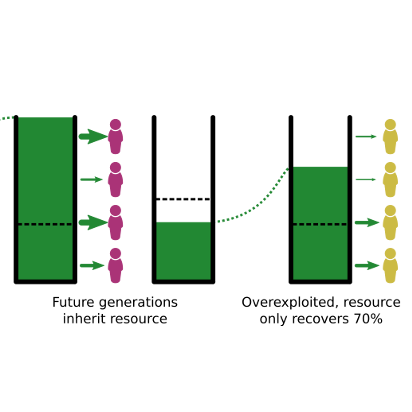 Conservationists often urge us to think about what kind of world we want to leave to future generations. But what if thinking about future generations — and about our descendants, specifically — triggers a geneological self-interest in us that can cause the environmental message to backfire? That was one of the questions raised by Chia-chen Chang’s new paper in Royal Society Open Science. The paper concerns results from a lab-based intergenerational common-pool resource game (Fischer et al. 2004, Hauser et al. 2014, Lohse et al. 2020). A common-pool resource game is a game that is designed to mimic the behaviour...
Conservationists often urge us to think about what kind of world we want to leave to future generations. But what if thinking about future generations — and about our descendants, specifically — triggers a geneological self-interest in us that can cause the environmental message to backfire? That was one of the questions raised by Chia-chen Chang’s new paper in Royal Society Open Science. The paper concerns results from a lab-based intergenerational common-pool resource game (Fischer et al. 2004, Hauser et al. 2014, Lohse et al. 2020). A common-pool resource game is a game that is designed to mimic the behaviour...
Combining a stake in the future with the presence of others negatively affects intergenerational cooperation
 Conservationists often urge us to think about what kind of world we want to leave to future generations. But what if thinking about future generations — and about our descendants, specifically — triggers a geneological self-interest in us that can cause the environmental message to backfire? That was one of the questions raised by Chia-chen Chang’s new paper in Royal Society Open Science. The paper concerns results from a lab-based intergenerational common-pool resource game (Fischer et al. 2004, Hauser et al. 2014, Lohse et al. 2020). A common-pool resource game is a game that is designed to mimic the behaviour...
Conservationists often urge us to think about what kind of world we want to leave to future generations. But what if thinking about future generations — and about our descendants, specifically — triggers a geneological self-interest in us that can cause the environmental message to backfire? That was one of the questions raised by Chia-chen Chang’s new paper in Royal Society Open Science. The paper concerns results from a lab-based intergenerational common-pool resource game (Fischer et al. 2004, Hauser et al. 2014, Lohse et al. 2020). A common-pool resource game is a game that is designed to mimic the behaviour...
May 24, 2021
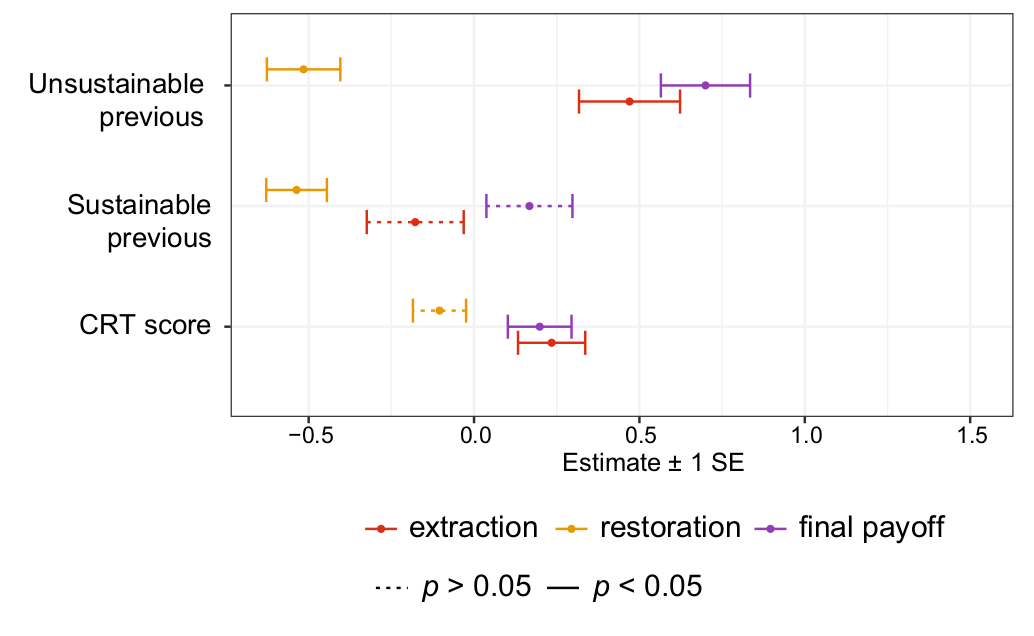 In conservation, we often talk about intergenerational equity, which is the idea that we should behave sustainably out of fairness towards future generations. However, how we treat others often depends on how we have been treated ourselves. If previous generations have over-exploited the natural resources and behaved unsustainably, will that make us feel less inclined to behave sustainably for future generations? In Chia-chen Chang’s recent paper in Sustainability Science, we explored this question using an experimental common-pool resource game. An example of a common-pool resource game The paper is specifically interested in restoration, and the key innovation was to investigate...
In conservation, we often talk about intergenerational equity, which is the idea that we should behave sustainably out of fairness towards future generations. However, how we treat others often depends on how we have been treated ourselves. If previous generations have over-exploited the natural resources and behaved unsustainably, will that make us feel less inclined to behave sustainably for future generations? In Chia-chen Chang’s recent paper in Sustainability Science, we explored this question using an experimental common-pool resource game. An example of a common-pool resource game The paper is specifically interested in restoration, and the key innovation was to investigate...
Intergenerational reciprocity and restoration
 In conservation, we often talk about intergenerational equity, which is the idea that we should behave sustainably out of fairness towards future generations. However, how we treat others often depends on how we have been treated ourselves. If previous generations have over-exploited the natural resources and behaved unsustainably, will that make us feel less inclined to behave sustainably for future generations? In Chia-chen Chang’s recent paper in Sustainability Science, we explored this question using an experimental common-pool resource game. An example of a common-pool resource game The paper is specifically interested in restoration, and the key innovation was to investigate...
In conservation, we often talk about intergenerational equity, which is the idea that we should behave sustainably out of fairness towards future generations. However, how we treat others often depends on how we have been treated ourselves. If previous generations have over-exploited the natural resources and behaved unsustainably, will that make us feel less inclined to behave sustainably for future generations? In Chia-chen Chang’s recent paper in Sustainability Science, we explored this question using an experimental common-pool resource game. An example of a common-pool resource game The paper is specifically interested in restoration, and the key innovation was to investigate...
Apr 1, 2021
Homophily
Homophily is the principle that contact between similar people occurs at a higher rate than among dissimilar people (reviewed in McPherson et al., 2001). It is a long-established principle (see e.g., Byrne (1969), which has 1000+ citations), and is particularly well established for friendships, which have been shown to be homophilous for ethnicity, age, religion, education, and social values ([16,156–160] in Dunbar (2018)). ‘Baseline’ homophily occurs because of the demography of the potential relationship pool, and effects beyond that occur due to other factors not limited to personal preference. Homophily acts on a variety of different dimensions. The ‘Big 5’...Feb 1, 2021
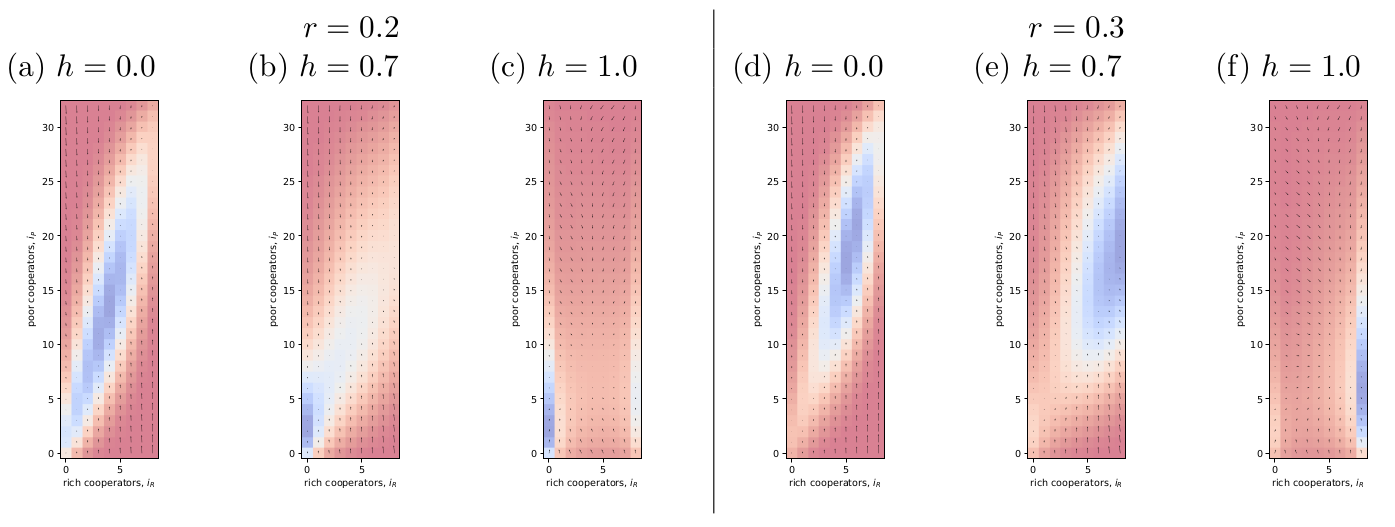 The purpose of this blog post is to replicate results from Vasconcelos et al. (2014) and use it to learn about the behaviour of this kind of model: Vasconcelos, V. V., Santos, F. C., Pacheco, J. M. and Levin, S. A. (2014). Climate policies under wealth inequality, Proceedings of the National Academy of Sciences 111(6): 2212–2216. I am interested in this model because it involves homophily: it is a social learning model, but the probability of imitation depends not only on the relative payoffs between the focal player and other but also on how similar they are in wealth. Code...
The purpose of this blog post is to replicate results from Vasconcelos et al. (2014) and use it to learn about the behaviour of this kind of model: Vasconcelos, V. V., Santos, F. C., Pacheco, J. M. and Levin, S. A. (2014). Climate policies under wealth inequality, Proceedings of the National Academy of Sciences 111(6): 2212–2216. I am interested in this model because it involves homophily: it is a social learning model, but the probability of imitation depends not only on the relative payoffs between the focal player and other but also on how similar they are in wealth. Code...
Evolutionary game theory model with homophilic imitation
 The purpose of this blog post is to replicate results from Vasconcelos et al. (2014) and use it to learn about the behaviour of this kind of model: Vasconcelos, V. V., Santos, F. C., Pacheco, J. M. and Levin, S. A. (2014). Climate policies under wealth inequality, Proceedings of the National Academy of Sciences 111(6): 2212–2216. I am interested in this model because it involves homophily: it is a social learning model, but the probability of imitation depends not only on the relative payoffs between the focal player and other but also on how similar they are in wealth. Code...
The purpose of this blog post is to replicate results from Vasconcelos et al. (2014) and use it to learn about the behaviour of this kind of model: Vasconcelos, V. V., Santos, F. C., Pacheco, J. M. and Levin, S. A. (2014). Climate policies under wealth inequality, Proceedings of the National Academy of Sciences 111(6): 2212–2216. I am interested in this model because it involves homophily: it is a social learning model, but the probability of imitation depends not only on the relative payoffs between the focal player and other but also on how similar they are in wealth. Code...
Oct 7, 2020
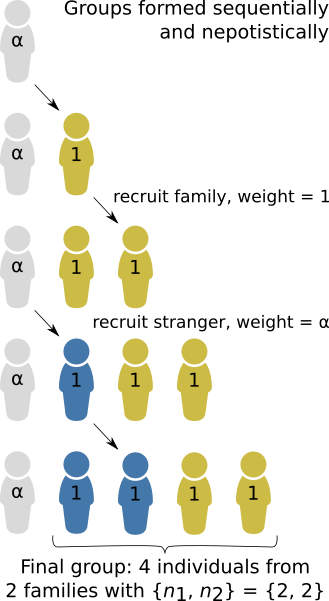 In this blog post, I will use the “Modern Tragedy of the Commons” as an example for how to use Hisashi Ohtsuki’s \(n\)-player generalisation of relatedness. In a recent experimental study in Science Advances, Gross and De Dreu (2019) described the Modern Tragedy of the Commons: if people can individually solve a problem by purchasing a solution that protects themselves only, then they may prefer that to contributing to a cheaper collective solution (Fig. 1). One recent example might be the trend among wealthy Californian home-owners to hire private firefighters to defend their property from wildfires exacerbated by climate change....
In this blog post, I will use the “Modern Tragedy of the Commons” as an example for how to use Hisashi Ohtsuki’s \(n\)-player generalisation of relatedness. In a recent experimental study in Science Advances, Gross and De Dreu (2019) described the Modern Tragedy of the Commons: if people can individually solve a problem by purchasing a solution that protects themselves only, then they may prefer that to contributing to a cheaper collective solution (Fig. 1). One recent example might be the trend among wealthy Californian home-owners to hire private firefighters to defend their property from wildfires exacerbated by climate change....
Using n-player relatedness to model the Modern Tragedy of the Commons
 In this blog post, I will use the “Modern Tragedy of the Commons” as an example for how to use Hisashi Ohtsuki’s \(n\)-player generalisation of relatedness. In a recent experimental study in Science Advances, Gross and De Dreu (2019) described the Modern Tragedy of the Commons: if people can individually solve a problem by purchasing a solution that protects themselves only, then they may prefer that to contributing to a cheaper collective solution (Fig. 1). One recent example might be the trend among wealthy Californian home-owners to hire private firefighters to defend their property from wildfires exacerbated by climate change....
In this blog post, I will use the “Modern Tragedy of the Commons” as an example for how to use Hisashi Ohtsuki’s \(n\)-player generalisation of relatedness. In a recent experimental study in Science Advances, Gross and De Dreu (2019) described the Modern Tragedy of the Commons: if people can individually solve a problem by purchasing a solution that protects themselves only, then they may prefer that to contributing to a cheaper collective solution (Fig. 1). One recent example might be the trend among wealthy Californian home-owners to hire private firefighters to defend their property from wildfires exacerbated by climate change....
Aug 16, 2018
Fixation probability of birth-death process
The goal is to understand where Eq. 2 of the Supplementary section of Sigmund et al. (2010) came from. We are considering a finite population within which individuals are pursuing different game-theoretic strategies. At each timestep, a pair of individuals is chosen at random, and they engage in a social learning process, where individual \(i\) will adopt the strategy of individual \(j\) according to a function that increases with difference in the payoff betweeen the two strategies \(P_j - P_i\), \[\frac{1}{1+\exp( -s (P_j-P_i) )}\] where \(0 \leq s < \infty\) is the imitation strength parameter. Let’s say that we have...Dec 15, 2016
Understanding the neigbour-modulated inclusive fitness approach
The goal is to understand Equation 4.2 of Rodrigues and Kokko (2016). To understand the technique, I read through Taylor et al. (2007), and Taylor and Frank (1996), specifically examples 4, 4a and 4b. Very briefly, we begin with a matrix \(A = [w_{i,j} ]\) whose elements represent the genetic contribution of class \(j\) to class \(i\). Then for some mutant genic value \(x\), the fitness derivative is \[\frac{dW}{dx} = \sum_{i,j} v_i \frac{dw_{i,j}}{dx} u_j\] where \(\mathbf{v}\) is the left eigenvector of \(A\) and is the reproductive values, and \(\mathbf{u}\) is the right eigenvector of \(A\) and is the class frequencies....Aug 23, 2016
Evolution of parochialism
Previously I was reading about identity in Singapore, and I found that the government project of creating a national identity is focused upon creating a cosmopolitan mindset (i.e. one of openness and tolerance of difference), and that this interacts in different ways with the two main groups of foreigners, the ‘foreign talent’ and the ‘foreign worker’. The literature review that I did there was focused upon the sociological literature and Singapore specifically. In this post I provide a summary of some reading that I have done on experiments investigating group identity using economic games. I’ve focused specifically upon parochialism in...Jul 23, 2016
Identity in Singapore, the Internet, and connections to game theory
The following is a literature summary that I undertook as part of my broader interest in modelling social systems, using identity in Singapore as a case study. I should preface all of this by saying that the ideas below are not ‘my own’ as such, but rather my attempt to synthesise the literature and opinions of experts in Singapore. Identity in Singapore Since independence, the Singaporean government has actively worked to construct a civic national identity for the country. Three main phases can be identified (Ortmann, 2009): (1) 1965-1980s, focused primarily upon the objective of economic growth, the idea of...Mar 23, 2016